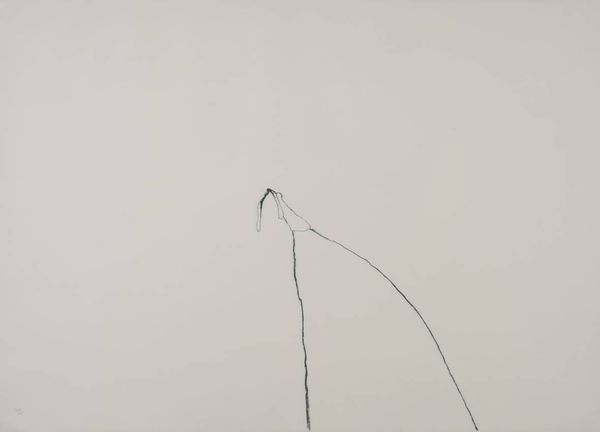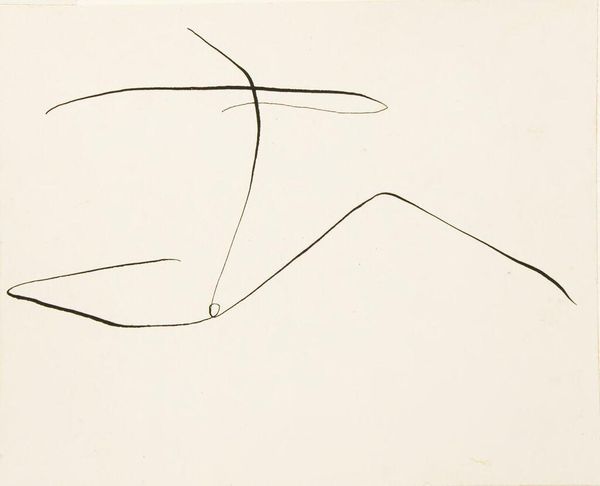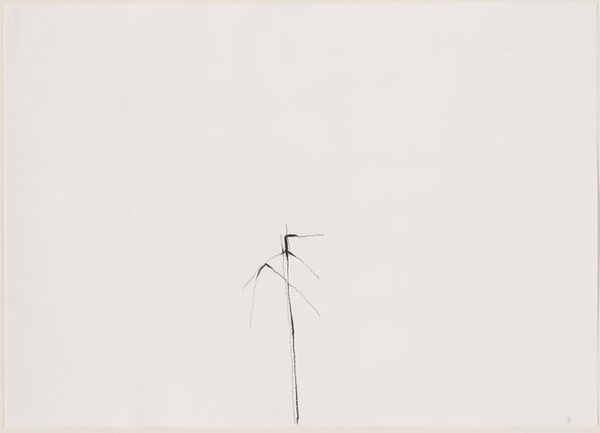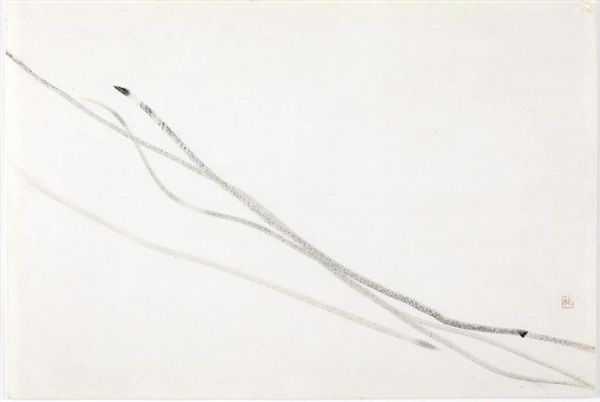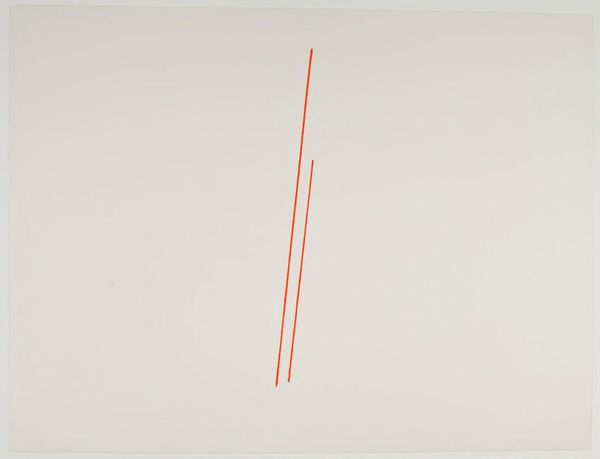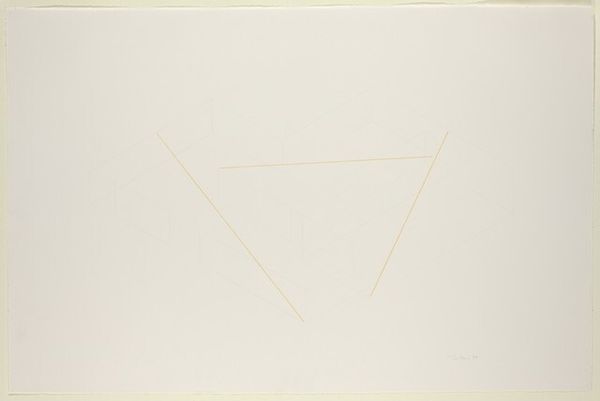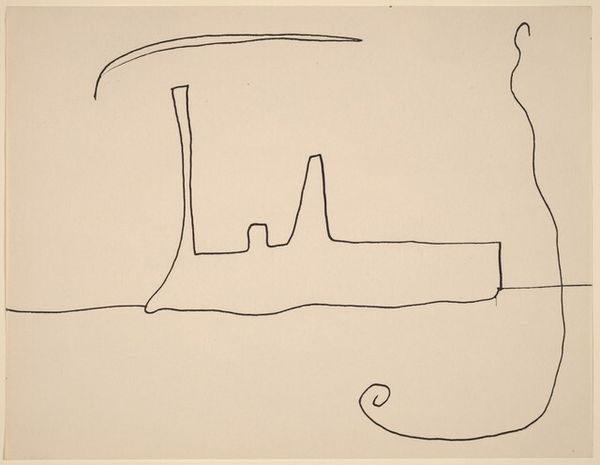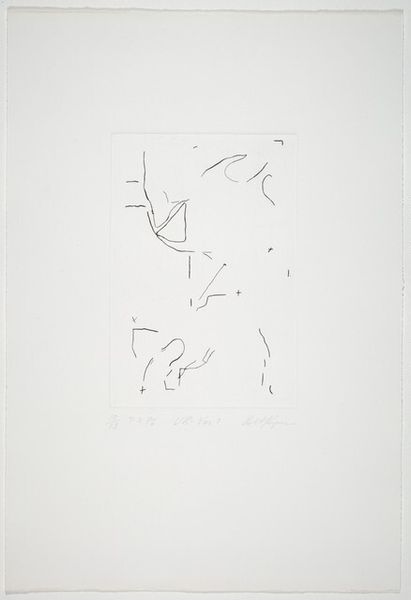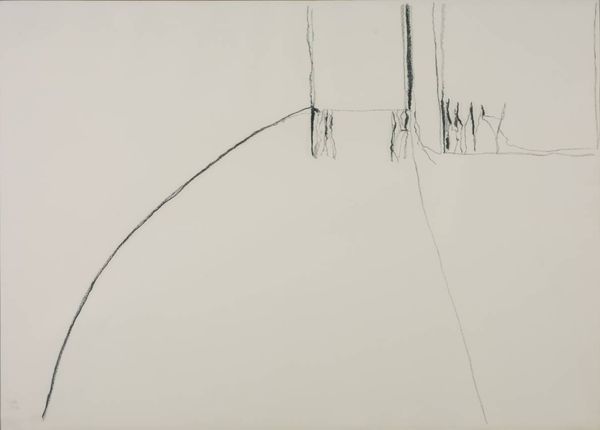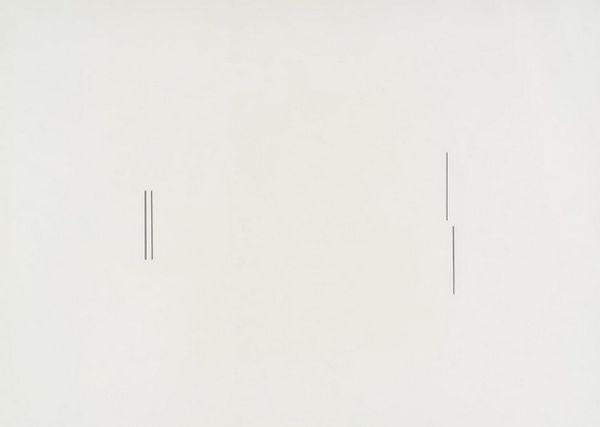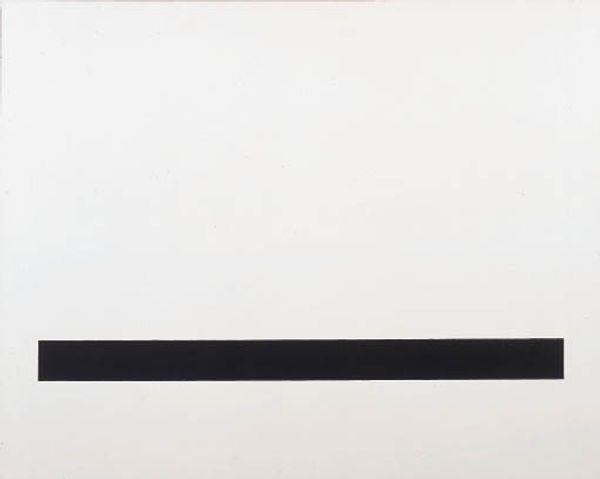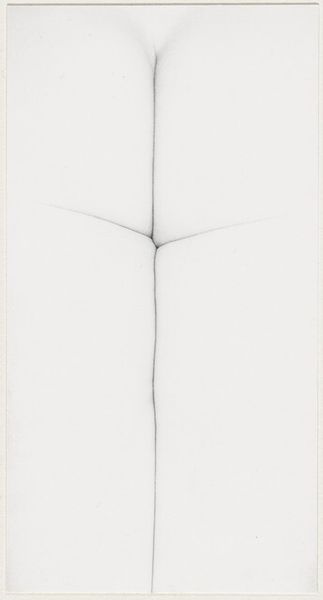
drawing, paper, graphite
#
drawing
#
negative space
#
minimalism
#
paper
#
geometric
#
abstraction
#
line
#
graphite
Dimensions: Overall: 62.4 x 87.8 cm (24 9/16 x 34 9/16 in.)
Copyright: National Gallery of Art: CC0 1.0
Curator: My initial reaction is that this is deceptively simple; almost aggressively minimal! Editor: It is certainly pared back. What we're observing here is a drawing by Jan Groth, aptly titled "Untitled," created in 1978. Groth primarily used graphite on paper. Curator: Graphite on paper...yes, but it’s more than that, right? Those strong diagonals and delicate lines meeting... like a conversation cut short. I feel a raw vulnerability staring back. Editor: The stark contrast between the solid line and the frail, almost hesitant verticals create visual tension and invite close scrutiny of the relationship between these elements. There is a profound exploitation of negative space. Curator: Absolutely, the emptiness is almost tangible. The geometry here seems both accidental and profoundly intentional. To me, there is an underlying yearning. Do you feel it too? Editor: Interesting! Structurally, the "line" functions almost as a signifier. It invites interpretation—perhaps a horizon, perhaps a boundary. We could deconstruct it infinitely! But I confess, my instinct leads to structural readings above emotional speculation. Curator: Oh, come on. These stark gestures seem like frozen emotions. The composition hints to three peaks, perhaps three phases of some past sorrow. I think sometimes minimalism aims for that, like paring life back to the bone and finding what survives. Editor: I think to see emotion in what may simply be the formal resolution of spatial concerns perhaps speaks to different epistemologies of experience. Curator: Fair enough. Different tools to peel away the layers of meaning. I'm still getting a bittersweet resonance though! Editor: And perhaps that's the power of art; that it provokes divergent resonances. Jan Groth’s “Untitled” provides, at its core, an eloquent interplay between form and void that transcends straightforward understanding. Curator: Precisely! It’s this sort of push and pull that helps reveal the rich poetry simmering just under the surface, and, it forces us to ponder, not just to look!
Comments
No comments
Be the first to comment and join the conversation on the ultimate creative platform.
